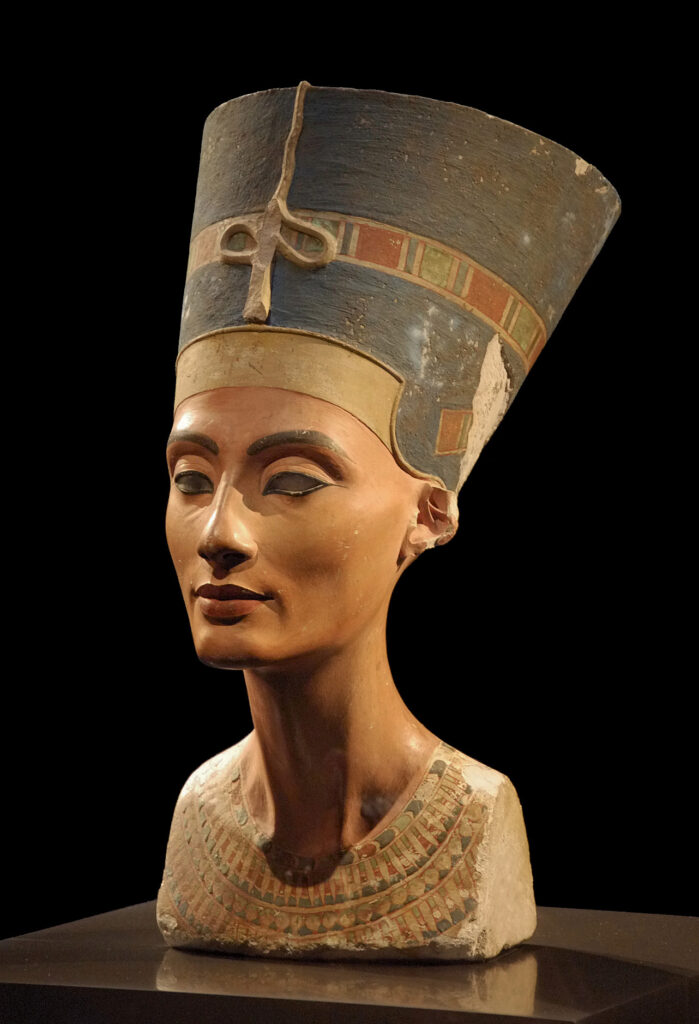A growing movement to return the famed “Nefertiti Bust” to its rightful home in Egypt is gaining traction, as an online petition has garnered nearly 10,000 signatures. The bust, which is considered one of the most exquisite artifacts from Ancient Egypt, is currently housed in Berlin’s Neues Museum—a point of contention that has sparked heated debates over ownership and cultural heritage for decades.
The Nefertiti Bust, which dates back over 3,400 years, was discovered by German archaeologist Ludwig Borchardt in 1912 during an excavation in Amarna, the capital city established by Pharaoh Akhenaten and Queen Nefertiti. Shortly thereafter, the sculpture was shipped to Germany, where it has remained ever since. The masterpiece, revered for its detailed craftsmanship and the lifelike depiction of Nefertiti’s features, has become a centerpiece of the Neues Museum’s collection and a symbol of national pride for Germany.
However, critics argue that the circumstances under which the bust left Egypt were questionable, with some historians alleging that Borchardt may have concealed its true value from Egyptian authorities at the time. This claim has fueled demands for the artifact’s return, with many Egyptians asserting that the bust is part of their cultural identity and should be displayed in its country of origin.
The online petition is the latest development in the long-standing campaign for the repatriation of the Nefertiti Bust. It has drawn support not only from Egyptian nationals but also from international advocates of cultural heritage repatriation. The letter accompanying the petition stresses the bust’s historical and cultural significance to Egypt and argues that its presence in Germany is a stark reminder of the colonial practices that once dominated the global acquisition of cultural treasures.
“Artifacts like the Nefertiti Bust are more than just objects; they are emblems of history, identity, and cultural pride,” reads a portion of the petition. “Keeping them in foreign museums strips the countries of origin of their historical narrative and ownership. It is time for the Nefertiti Bust to return home.”
Proponents of the bust’s repatriation also point to recent examples of successful restitutions, such as the return of the Benin Bronzes from several European museums to Nigeria, and the French government’s decision to return looted treasures to Benin and Senegal. These cases have set a precedent for international institutions to reconsider the ownership of colonial-era acquisitions, potentially paving the way for the Nefertiti Bust’s return to Egypt.
However, the petition has also sparked debate among art historians and museum professionals who argue that the bust’s presence in Berlin is not only legal but also critical for preserving its integrity and ensuring its accessibility to a global audience. The Neues Museum has invested heavily in the bust’s conservation and display, and German authorities maintain that the artifact was legally acquired at the time of its discovery.
The German government has, in the past, rebuffed calls for the bust’s return, citing the artifact’s fragile condition and the legal agreements surrounding its acquisition. They have also argued that the Nefertiti Bust serves as a cultural bridge, fostering understanding and appreciation of Ancient Egyptian civilization among the millions of visitors who see it each year.
Still, the petition has reignited discussions around the ethics of artifact ownership and the responsibilities of museums in redressing historical injustices. Advocates for repatriation contend that the argument for keeping the Nefertiti Bust in Germany is inherently flawed, as it overlooks the historical context in which it was removed from Egypt and disregards the emotional and cultural significance the artifact holds for the Egyptian people.
As the petition continues to gain momentum, it remains to be seen whether it will lead to meaningful dialogue between Egyptian authorities and the German government. Regardless of the outcome, the case of the Nefertiti Bust is emblematic of the broader debate on cultural repatriation—a debate that questions who truly owns history and how the stories of ancient civilizations should be told and preserved.
For Egypt, the bust is not just a relic of the past; it is a vital part of the country’s cultural heritage and identity. For Germany, it is a prized exhibit that has become a symbol of artistic mastery and a centerpiece of one of Europe’s premier museums. The challenge lies in finding a solution that acknowledges the bust’s complex history while respecting the rights and cultural ownership of its country of origin.
As the push for repatriation of cultural artifacts grows stronger around the world, the future of the Nefertiti Bust may ultimately depend on whether the global community is willing to reassess long-standing power dynamics and make room for new narratives that prioritize cultural equity and historical justice.
No comments yet.







